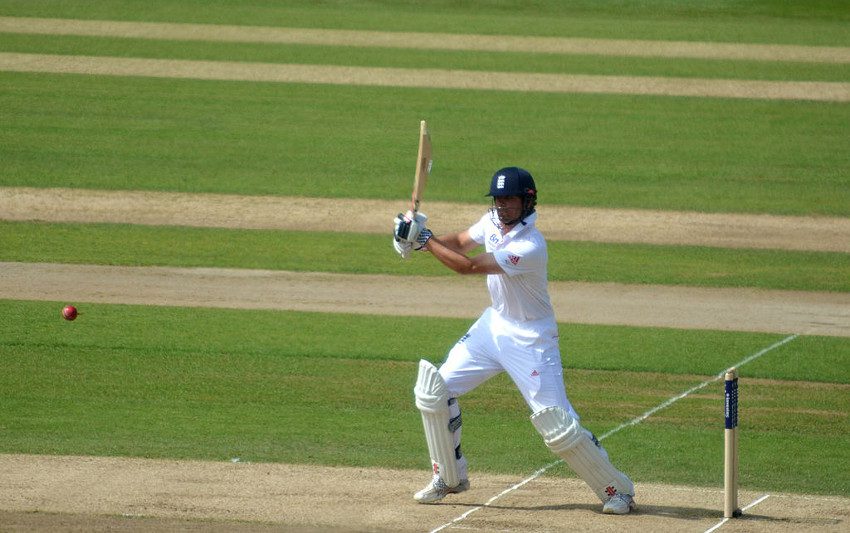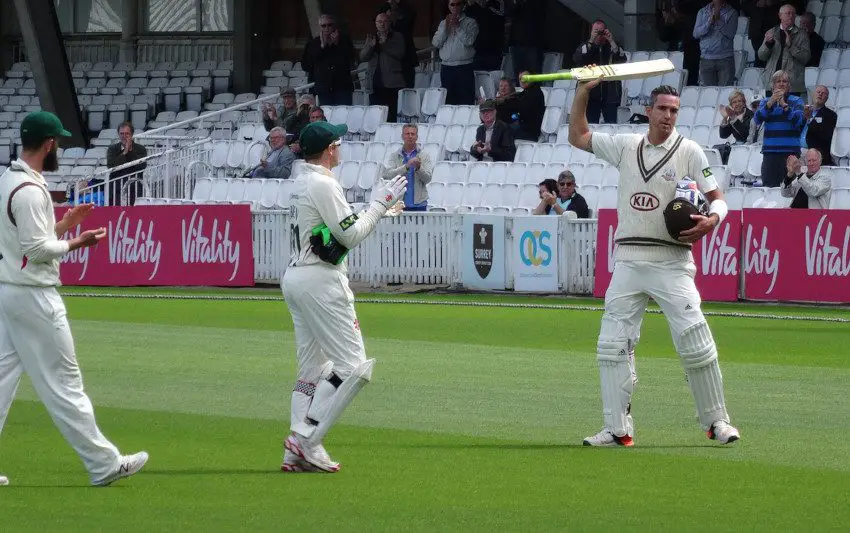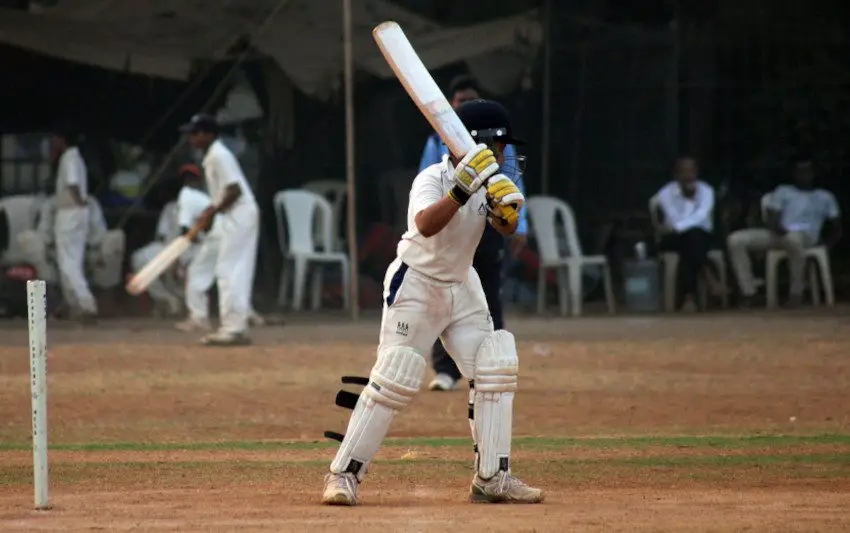Table of Contents
This is the most important statistic for any batter so let’s look at batting average, what it means and how it is calculated.
What is Batting Average in Cricket?
A batting average is a simple statistic that shows how many runs a batsman scores prior to each dismissal. It uses calculations over their entire career and it’s a mark of how good they are as a batter.
Batting average helps selectors pick their best players and it’s all part of the wide range of cricket statistics that teams, fans and even bettors employ.
What is a Good Batting Average in Cricket?
The answer to this question will depend on the exact form of the game. In test cricket, a good batting average is around the 40.00 mark.
In ODIs, 35 to 40 would be the benchmark while 30 is a respectable average in T20 cricket.
How Batting Average is Calculated in Cricket?
In order to calculate a batting average we need two figures:
- The total number of runs scored by a batter
- The number of times that they have been dismissed
Note that we don’t necessarily use the total number of innings played by that batter. If they are not out at the end of an innings, the runs are carried over to the next time.
In 16 of those innings, he finished not out. Therefore, we firstly need to deduct 16 from 291 to give us 275.
12,472 runs divided by 275 completed innings = a test batting average of 45.35.
Note that the final figure is rounded to two decimal places.
That’s an actual example but you can use that calculation to gauge anyone’s batting average in any format of the game.

Why is Batting Average Important?
Batting averages can tell us how good someone has been over their career, but it’s more important for current players to have a good average.
When the time comes for international selection committees to meet, they will look at statistics to help them come to a decision.
Batting averages can be read at any stage. Those selectors might well want to assess an overall average across a player’s career. However, it may well be the case that a batter started slowly before scoring more heavily later on.
It’s all about current form and that’s why the averages for the season will have more relevance. All of these statistics are readily available and easy to access.
A high batting average is not a guarantee that a team will win an individual test match. In that sense, it’s not always important but those big numbers will obviously be of great help to a team over a period of time.
It is, perhaps, more important for the individual batsman, especially while their career is still progressing. A high batting average is always going to impress the selection committee, particularly if it’s been built up over a lengthy period of time.
High individual scores often win games so that’s an important factor. In regards to batting averages, this is a measure used to judge how prolific a player is and whether they can bat for long periods of time in tests. For those reasons, batting averages can be a vital statistic.
In summary, it’s really important for a batter to maintain a good batting average. It will help to ensure future selection for his or her domestic side and, potentially, at international level too.
Cricket Batting Average Calculator
This cricket batting average calculator can do all of the hard work for you. For those who are playing the game professionally, the numbers are out there but you can check them with this tool.
Batting Average Calculator
Additionally, this is a useful calculator for those who play at club level and are working out averages across a season or a playing career.
Alternative Measures of Batting Performance
While a player’s batting average is an important measure of his batting ability, there are other ways in which to assess their quality. Remember, an average is taken right across a player’s career and for some batsmen, this will include early games where they might have been finding their way at international level.
The ICC Rankings are a good gauge of current displays and may offer a more relevant guide as to how a player has been performing at that point in time.
Strike rate is also important but more so in limited overs cricket. In fact, strike rates can be more important than averages in ODI and T20 cricket where teams are looking to either post or chase down big targets.
I would conclude by saying that batting average is the best measure in test cricket but there are alternatives that can help you assess a batter’s quality.
Good Batting Average
Now that we understand just how important a good batting average is, what are the levels that can be considered as ‘good?’
In Test Cricket
When I grew up watching cricket in the 1980s and through to the 1990s, it was said that a good batting average started at 40.00. I’d maintain that this is still the case although there are those who feel that the base line now starts at 50.00.
It may be true to say that there were better bowlers around in the 1990s than there are today. The likes of Shane Warne, Muttiah Muralitharan, Glenn McGrath, Wasim Akram, Waqar Younis, Anil Kumble, Courtney Walsh and Curtly Ambrose spring to mind.
Pitches may also have been of poorer quality than they are now. Players such as Virat Kohli, Joe Root, Babar Azam, Steve Smith and Kane Williamson may be aiming at a 50 average, but not everyone is as good as they are so I would maintain that 40 is a solid benchmark.
In ODIs
In ODI cricket, players have to bat at a higher tempo and they will put their wickets at greater risk than they would in test matches.
Once again, opinion will vary, but I would argue that a good ODI average is around 35 to 40.
If we look at some current players, Virat Kohli and Joe Root are both averaging over 50 in this format. The best average of all time is that of Rassie van der Dussen which sits at 69.31 as of September 2022.
Once again, there will always be exceptions such as those, but most batters would be aiming for an ODI average of 35 as a minimum.
In T20
Batters tend to be far more reckless in T20 cricket. It’s all about scoring at a high run rate and keeping wickets in hand carries less importance.
Should we expect to see lower T20 batting averages as a result of this? You’ll see different opinions once again, but a good batting average in this format might start at 30 and climb to 35 at the higher end of the scale.
In T20 internationals, both Virat Kohli and Mohammad Rizwan are averaging more than 50 but, once again, these are exceptional players. Over the course of a career, an effective T20 batter could consider an average at 30 or above to be ‘good’.
Conclusion
As a club cricketer you might not obsess about your batting average quite so much. At this level, it’s all about making contributions with the bat, maintaining your own form and helping your team win tight games.
Cricket fans, however, tend to be obsessed with statistics so you may be one of those people who updates their batting averages at the end of every innings.
At professional cricket levels, the average becomes far more important. It’s a perfect indicator of form and whether a player deserves to keep being selected for their domestic or international side.
We’ve seen some exceptional averages in all three formats, but the figures mentioned in each category will be considered to be ‘good’. Anything above that will be excellent.


